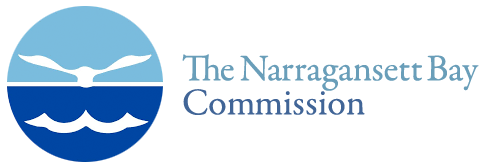NBC maintains and monitors two fixed-site water quality stations. These stations have been established in proximity to the Field’s Point and Bucklin Point wastewater treatment plant outfalls. The Bullock’s Reach station is a floating buoy located between Gaspee Point and Conimicut Point in the Providence River and the Phillipsdale Landing station is a dock site located on the Seekonk River in East Providence. The Bullock’s Reach station has three instruments deployed, one at a depth of approximately 1 meter below the surface, one at approximately 4 meters below the surface and one located at approximately 1 meter above the sediment (approximately 7 meters below the surface). The Phillipsdale Landing dock station has one instrument deployed approximately 0.5 meter below the surface and one at approximately 0.5 meter above the sediment (approximately 2 meters below the surface).

State-of-the-art technology at these sites collects measurements for depth, temperature, salinity, pH, dissolved oxygen, turbidity and fluorescence (a proxy for chlorophyll and phytoplankton activity). Data is collected by the water quality instruments at the Bullock’s Reach buoy every 15 minutes and is transmitted via radio signal to a base station at Field’s Point every hour; likewise, data from the Phillipsdale Landing station is collected every 15 minutes and transmitted every hour by phone connection. These instruments are changed out every two weeks for cleaning and are checked against the calibration standards for accuracy at this time as well.
During 2001 and 2002, NBC and URI-GSO worked together to service and maintain the Bullock’s Reach buoy and in 2003, the buoy maintenance was taken over by NBC, who has continued to maintain the buoy as well as the Phillipsdale Landing dock site, with many QA/QC improvements. The NBC staff is also continually making improvements to equipment and infrastructure to ensure the reliability of data collected. These monitoring stations directly benefit Narragansett Bay research by allowing for continuous, real-time water quality monitoring in the more urbanized portions of the upper Bay. Bay researchers can consistently track changes in the Rivers from a remote location. This data also provides a baseline of water quality across seasons, reveals yearly trends, and is a great tool in monitoring water quality changes that may occur before and after major NBC projects occurring in the area.

NBC Results: What have we found to date?
The chart above shows the percent of time that the daily dissolved oxygen average was at or below 2.9 mg/l at the Bullock’s Reach buoy bottom monitoring station between May/June and October of each year. The summer of 2014 had less days of low dissolved oxygen than any of the previous years shown.
Click here for Fixed-Site Monitoring data
Please note: these data are made available in near real-time direct from field-deployed instruments. They have not undergone quality control review. Gaps in the data due to instrument problems may occur, and erroneous readings may be present. Official data sets are reviewed and edited for quality control by the Narragansett Bay Fixed-Site Monitoring Network Quality Assurance Officer at the end of each monitoring season and are available on their website (http://www.dem.ri.gov/programs/emergencyresponse/bart/netdata.php). For further questions regarding data quality or unusual readings, please contact us.
Contact Us at snapshot@narrabay.com
